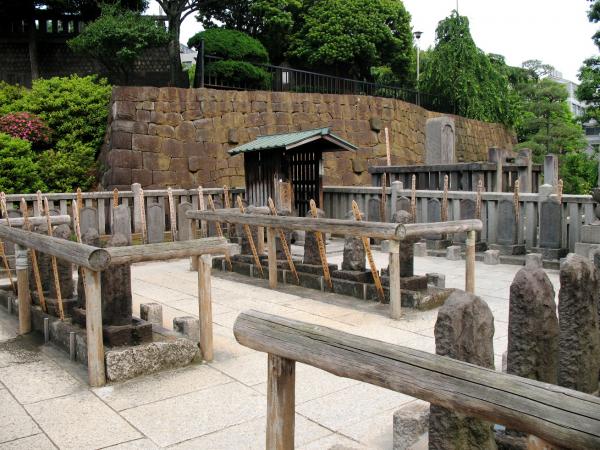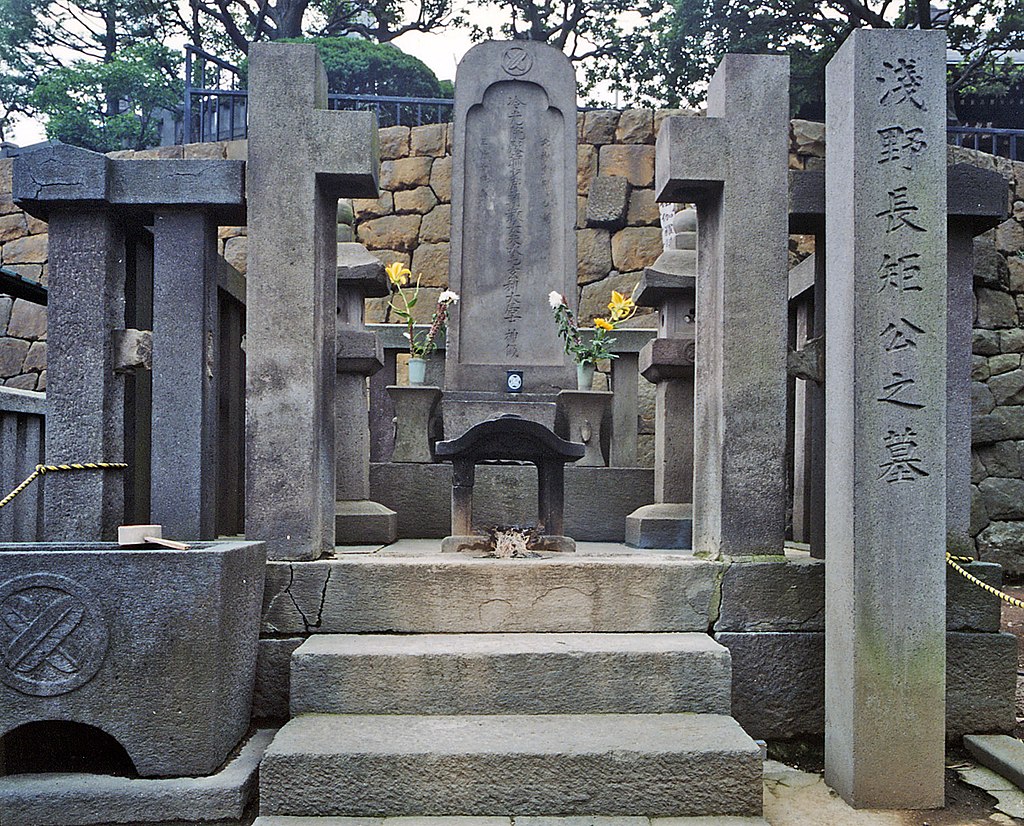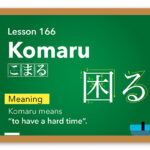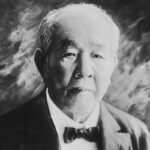.
The vendetta of the 47 Ronin (masterless samurai) loyal to Asano Naganori, the Lord of Ako, ranks as one of the most dramatic episodes of Japanese history and to this day is one of Japan’s most famous stories.
The incident created quite a stir at a time when samurai virtues had seemingly been forgotten during the long peaceful years of the Tokugawa Shogunate. Innumerable poems and essays described the incident, and by 1844 no fewer than 47 plays had been written about these ronin. The incident began in 1701, when Asano and Lord Kamei Korechika of the Tsuwano domain were asked to arrange a fitting reception for the envoys of the Emperor at Edo Castle during their sankin-kotai. Sankin-kotai was a policy instituted by the Tokugawa Shogunate for the purpose of strengthening central control over the daimyos (feudal lords). It required the daimyos to alternate living for a year in their domain and in Edo
(Tokyo), the capital.
.

.
Asano and Kamei were to be given instruction on the necessary court etiquette by Kira Yoshinaka, a powerful official of Tokugawa Tsunayoshi. It is said that Kira became upset with Asano because he failed to offer a befitting gift as compensation for the instruction he was to receive. Other sources say that Asano refused to offer the bribe Kira insisted on. Consequently, Kira treated Asano poorly and failed to prepare him for fulfilling his specific court duties. Asano finally gave in to his pent up frustration and drew his sword on Kira, slashing his forehead and shoulder.
Since Asano had drawn his sword within Edo Castle’s walls where it was strictly forbidden to draw a weapon, he was ordered by the Shogun to commit seppuku (ritual suicide by disembowelment).
Following his death, Asano’s body was buried in Sengakuji Temple and his lands were confiscated. This caused Asano’s retainers, headed by Oishi Yoshio, to become masterless samurai without a clear means of support.
Oishi and the others lived in apparent retirement for over a year, which convinced Kira’s spies that they entertained no thought of revenge. However, in 1702, Oishi and the other 46 ronin decided to strike. They descended on Kira’s mansion and killed him, severing his head. From there they marched to Sengakuji and placed Kira’s severed head on their master’s grave before surrendering to the authorities. They were ordered to disembowel themselves and their bodies were buried next to their master.
However, not all of the 47 ronin committed seppuku. There is conflicting information which indicates that Terasaka Kichiemon, a 37-year-old ashigaru (foot-soldier) of lower rank, disappeared from the ronin procession to Sengakuji Temple following Kira’s slaying or he may have fled just before the raid. Other sources indicate that he was dispatched by Oishi to carry the news of the successful slaying to Asano’s younger brother, Asano Daigaku (1670-1734).
.

.
What is known is that Terasaka was a foot-soldier in the service of Yoshida Chuzaemon (1641-1703), the vice-chief of the league of revenge under Oishi, and the only one of the 47 ronin who was not a vassal of Asano. Terasaka served the Yoshida family on a personal level since age eight before becoming a foot-soldier. He was admitted to the league of revenge just ten months before the attack and his name was listed along with the names of the 46 other samurai on the official league manifesto which was handed to the bakufu (Tokugawa government).
.

.
When the bakufu interrogated Oishi and Yoshida, Yoshida stated that Terasaka accompanied the league of revenge to the gate and afterwards was nowhere to be seen. It is believed that Yoshida lied and the other 46 reached a mutual agreement to support his story. In Terasaka’s own account of the Ako revenge, he stated that he entered Kira’s
mansion with the others and participated in the attack. He clearly described the events afterwards, including proceeding to Sengakuji by way of the Shin-Ohashi bridge. In the final paragraph, Terasaka stated that due to certain circumstances, he was compelled to leave the group as they withdrew from the temple. He never defined what those circumstances were.
It is believed that he later entered the service of the Yamauchi clan and served their branch in Azabu. Terasaka passed away on November 8, 1747 at the age of 82.
(Photo credits: Tatsuya Sudo)
.
.
『Kristine’s Eye on Japan: Introduction to Japanese Culture』
Writer: Kristine Ohkubo
.
.
.
(5/23/2022)




